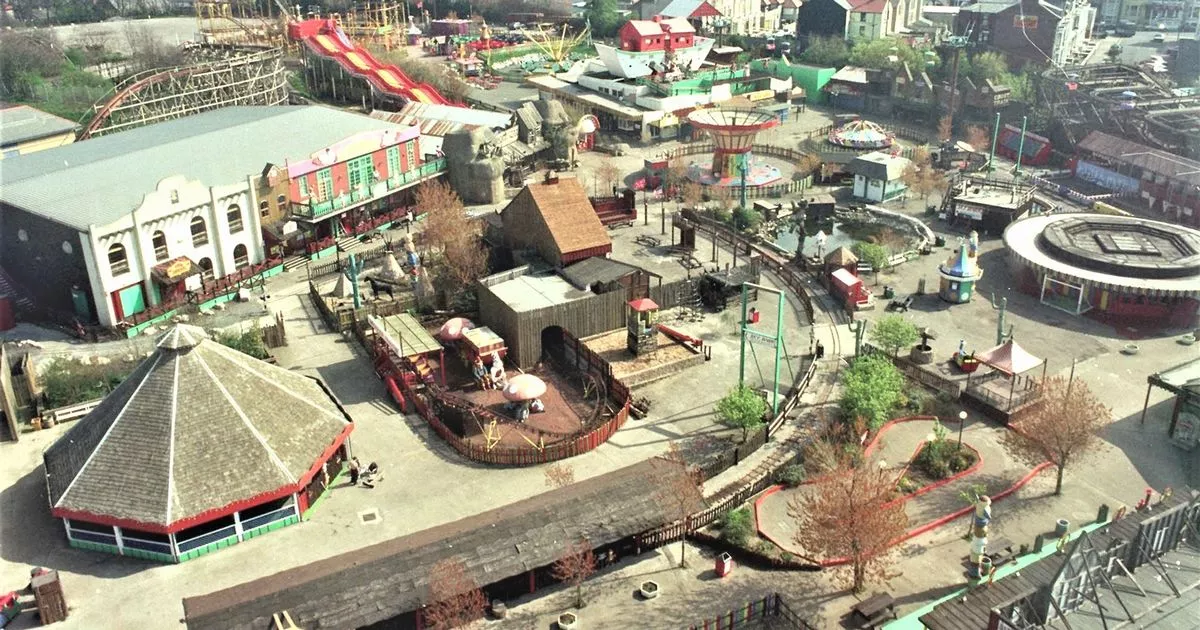Many of our favourite theme parks we loved in the ’80s and ’90s are sadly no longer around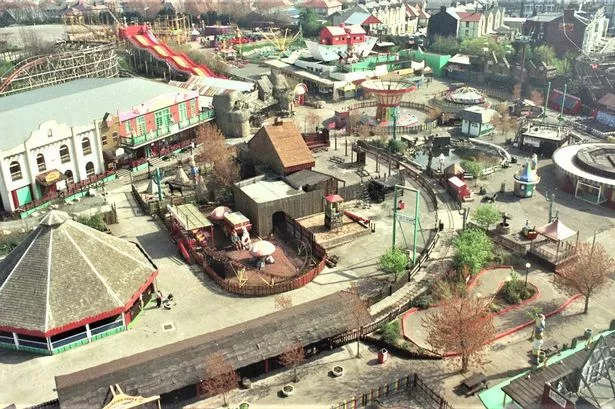 Many of our favourite theme parks popular in the 1980s and ’90s have since closed(Image: No fee)
Many of our favourite theme parks popular in the 1980s and ’90s have since closed(Image: No fee)
As the weather warms up and we head into the Easter break, many of us will look for exciting days out with the kids. In the ’80s and ’90s, you couldn’t go wrong with a day out at one of the nearby theme parks.
Back then, we were spoiled for choice, either in Greater Manchester or a short car or train journey to a park in Lancashire, Derbyshire, or North Wales. Sadly, many of these meccas for thrill-seekers have since closed down.
While there are still big amusement parks, such as Alton Towers in Staffordshire and Blackpool Pleasure Beach, the latter announced this week that it is closing five rides due to low visitor numbers.
So, for those old enough to remember feeling butterflies in their stomachs when hearing the screams of rollercoaster riders and the smell of candy floss, here are six fairgrounds and amusement parks we used to love but are sadly no longer around. Let us know your memories in the comments.
American Adventure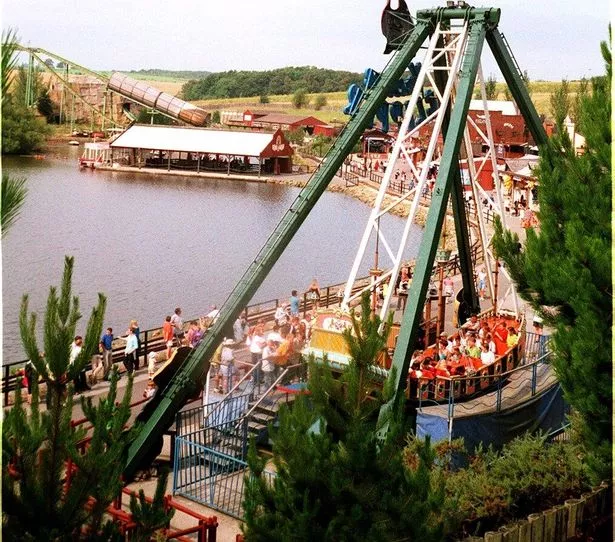 The giant swing boat at the American Adventure near Ilkeston with the log flume ride across the lake in the distance(Image: Derby Telegraph / Trinity Mirror)
The giant swing boat at the American Adventure near Ilkeston with the log flume ride across the lake in the distance(Image: Derby Telegraph / Trinity Mirror)
The American Adventure theme park in Ilkeston, Derbyshire, was a much-loved Wild West-inspired theme park. Famous for its white-knuckle rides, it opened on a country estate in 1987 and thrilled visitors from all over the North West in the ’80s and ’90s.
Owned by Manchester-based Granada, American Adventure had an Old West and cowboys versus Native Americans theme. Despite being in direct competition with the likes of nearby Alton Towers, American Adventure proved a big hit with its rollercoasters, fairground rides and even its own Wild West town called Silver City with a saloon – Lazy Lils – featuring spectacularly staged shoot-outs.
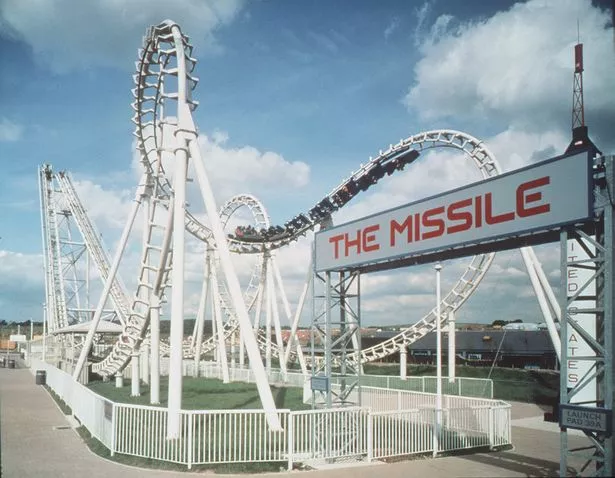 The Missile roller coaster at The American Adventure theme park in Ilkeston, Derbyshire(Image: Derby Telegraph)
The Missile roller coaster at The American Adventure theme park in Ilkeston, Derbyshire(Image: Derby Telegraph)
Some of the park’s most memorable thrill rides included the Runaway Train, The Missile and the Rocky Mountain Rapids. In 1989, the Wild West theme expanded to include other North American culture and history elements.
This included an area based around space travel and featured the Missile roller coaster, which was officially launched by Apollo 11 lunar module pilot Buzz Aldrin and voted the best roller coaster in the UK at the time. Another of the park’s memorable rides was the Log Flume, which had the tallest drop of any in the country.
The park began to decline in 1996, and in 1997, Granada sold it to Ventureworld. Sadly, the park’s fortunes couldn’t be turned around, and it closed for good in 2006.
Belle Vue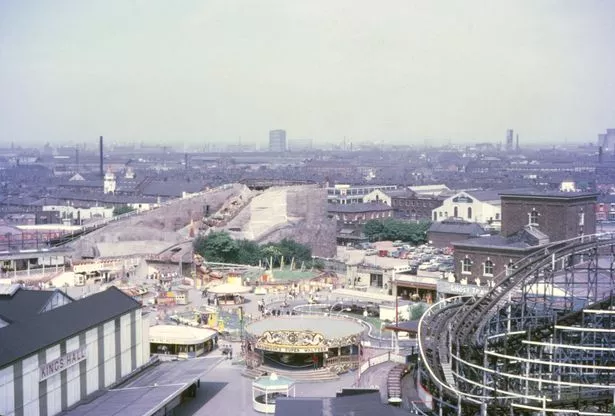 Belle Vue amusement park(Image: Chetham’s Library | www.chethams.org.uk)
Belle Vue amusement park(Image: Chetham’s Library | www.chethams.org.uk)
It’s been over 40 years since Belle Vue closed its gates for good. It started life as a small private collection of birds owned by gardener John Jennison but blossomed into Manchester’s very own theme park.
By the early 20th century, its collection of animals – from Asian elephants to chimpanzees – was being sold as the ‘showground of the world’, eventually making it one of the north’s most popular tourist attractions and the country’s third largest zoo.
For a century and a half, the area off Hyde Road in Gorton boasted the now legendary zoo gardens, fun fair and amusement park, circus, concert venue, greyhound track and speedway stadium.
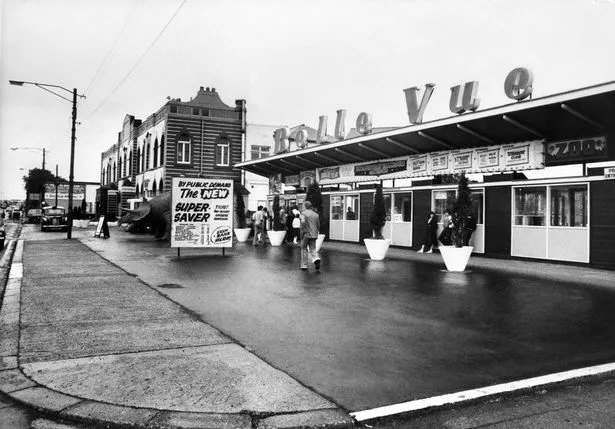 Belle Vue ticket office. October 1982
Belle Vue ticket office. October 1982
With such a wide variety of entertainment, it attracted up to two million visitors per year in its heyday. Mancunians didn’t have to venture outside M18 – never mind embarking from Manchester Airport and travelling abroad – to feel like they were on holiday.
However, spiralling debts saw the zoo wound up in the 1970s, and the park closed its gates in 1982. Its legendary attractions were later demolished.
Join our Greater Manchester history, memories and people Facebook group here.
Frontierland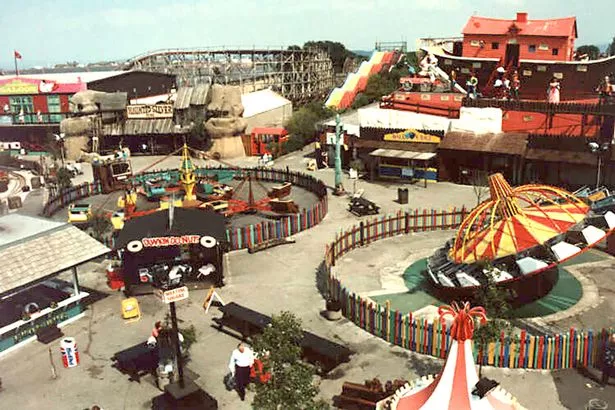 Frontierland in Morecambe(Image: Christian Solar (CC SA 4.0))
Frontierland in Morecambe(Image: Christian Solar (CC SA 4.0))
Many who grew up in the 1980s and ’90s will remember the excitement of a trip to Frontierland. The Wild West theme park in Morecambe, Lancashire, is remembered for its classic rides, such as the Texas Tornado roller coaster, Runaway Mine Train, and Polo Tower.
It first opened in 1906 as the West End Amusement Park. The theme park changed its name once again to Fun City and then Morecambe Pleasure Park. Finally, in 1987, it transformed into Frontierland to reverse falling visitor numbers.
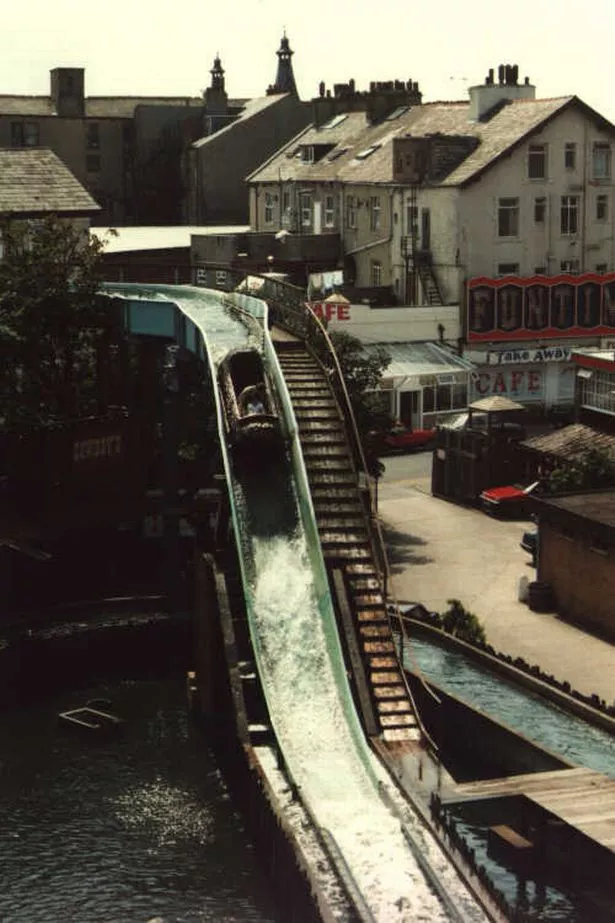 Log Flume at Frontierland in Morecambe(Image: By Christian Solar – https://www.solars.de/cgi-bin/p.pl/parks/altegalerie/frontierland.html, CC-BY-SA, https://coasterpedia.net/w/index.php?curid=30656)
Log Flume at Frontierland in Morecambe(Image: By Christian Solar – https://www.solars.de/cgi-bin/p.pl/parks/altegalerie/frontierland.html, CC-BY-SA, https://coasterpedia.net/w/index.php?curid=30656)
New rides were regularly added in its 12 years of operation as Frontierland. In 1989, the ‘Sky Ride’ was introduced, a cable car system that allowed people to fly over the park and out over Morecambe’s spectacular promenade.
In 1993, Frontierland also added the Polo Tower. Originally known as the Space Tower, the ride had been a fixture at Blackpool Pleasure Beach for over ten years but had to make way for The Big One, its now famous £12 million, 235-ft-tall roller coaster.
The new tower, sponsored by Polo Mints, was positioned at the front of the park, resulting in a welcome boost in visitor numbers. Sadly, the park began to shrink in 1998 as rides were sold off before officially closing in 2000.
Love Greater Manchester’s past? Sign up to our new nostalgia newsletter and never miss a thing.
Granada Studio Tours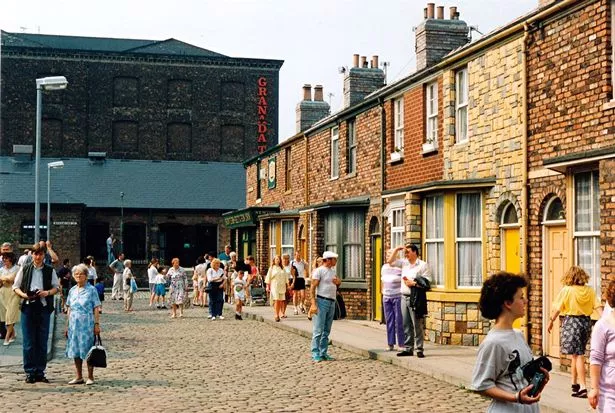 Granada Studios. August 15, 1990
Granada Studios. August 15, 1990
Telly fans rejoiced when it was announced that the Granada Studios Tour would open in Manchester in 1988. Visitors took a guided tour, including walking along the Coronation Street cobbles and visiting some of the iconic sets.
The tour also allowed guests to walk along Downing Street, explore the Baker Street set from The Adventures of Sherlock Holmes, and look around the lounge at Emmerdale’s Home Farm.
Although it didn’t have the big-name thrill rides of other parks, it did have Skytrak, the world’s first ‘flying’ rollercoaster. Skytrak was also a ‘solo coaster,’ meaning riders would experience the ride with only one person per car. The single-passenger design kept the ride’s capacity low, at only 200 hourly riders.
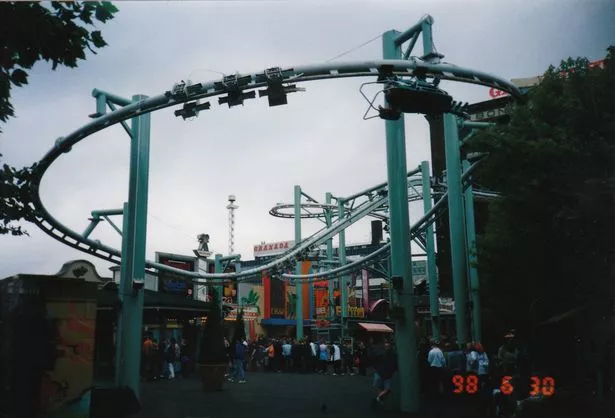 The Skytrak rollercoaster at Granada Studios in 1998(Image: David Ellis)
The Skytrak rollercoaster at Granada Studios in 1998(Image: David Ellis)
At 1,282 ft long and 50ft high, passengers would fly around the track at a speed of 28mph and experience a G-force of 2.5. Sadly, it lasted only a year, and many who wanted to ride on Skytrak never got the chance.
With visitor numbers 30% less than expected, in December 1999, the entertainment theme park closed to the general public. However, it welcomed visitors as part of hospitality packages until 2006, when it closed for good.
Camelot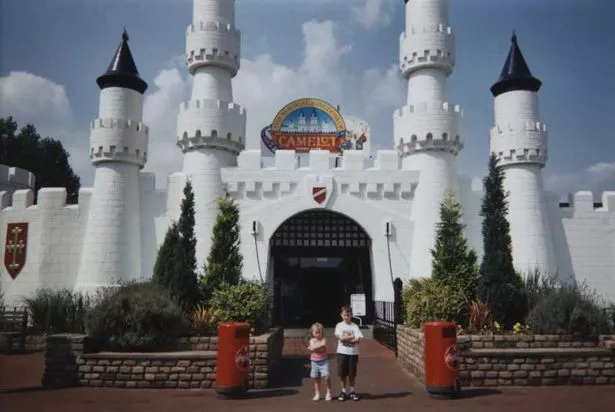 Children wait patiently to enter Camelot theme park in Chorley, Lancashire
Children wait patiently to enter Camelot theme park in Chorley, Lancashire
A trip to Camelot theme park would have been the highlight of any school kid’s calendar back in the day. Opening in 1983 by Park Hall Leisure, it enticed adults and children with the legend of King Arthur, his knights of the Round Table, and the wizard Merlin.
In the late ’80s, the site’s golden age arrived after the opening of rides, including Dragon Heights, Kingdom in the Clouds, Dragon Flyover, and Falcon’s Flight. By then, the Chorley park had been bought out by Granada, which purchased the holding company Park Hall Leisure.
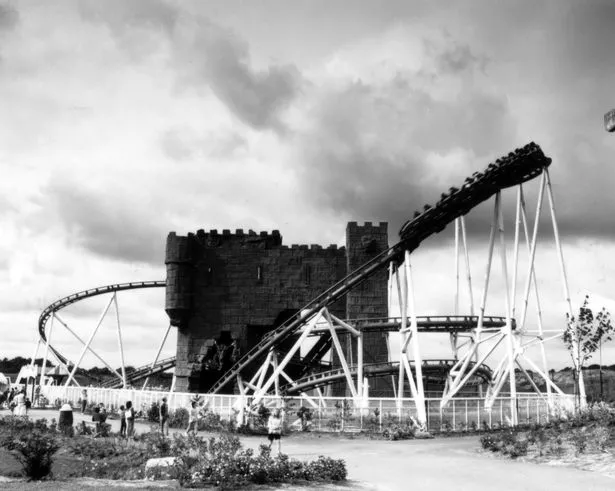 The Tower of Terror at Camelot Theme Park, circa 1990
The Tower of Terror at Camelot Theme Park, circa 1990
Its archaic quirks and characteristics set it apart from other theme parks, and many children will remember the thrill of rides such as Knightmare, the Tower of Terror, and Excalibur. But by the mid-’90s, the glory days began to fade, with visitor numbers falling to around 500,000 a year in 1995 from 2.5 million in 1987.
Granada was sold to Prime Resorts Limited, which axed rides including Excalibur and Tower or Terror while bringing in Excalibur 2, Whirlwind, and the new Knightmare. By 2000, visitors dropped to 400,000 a year and then 380,000 by 2004. By 2009, numbers were below 300,000, with the park entering receivership and closed permanently in 2012.
Ocean Beach Boats are moored in view of the funfair at Rhyl, June 1983(Image: RDImages/Epics/Getty Images)
Boats are moored in view of the funfair at Rhyl, June 1983(Image: RDImages/Epics/Getty Images)
For over a century, a historic North Wales seafront welcomed holidaymakers and day trippers with its attractions and rides. Transformed from marshland, Rhyl’s Marine Lake opened on May 24, 1895, and is North Wales’ only salt-water lake Marine Lake.
It became home to Rhyl Swimming Club in 1896 and was also used for bathing and boating. The Rhyl Amusement Company took over Marine Lake in 1910, transforming it into a Victorian funfair with a water chute and merry-go-rounds. The miniature railway circling the lake opened in 1911 and is the only attraction still operating today.
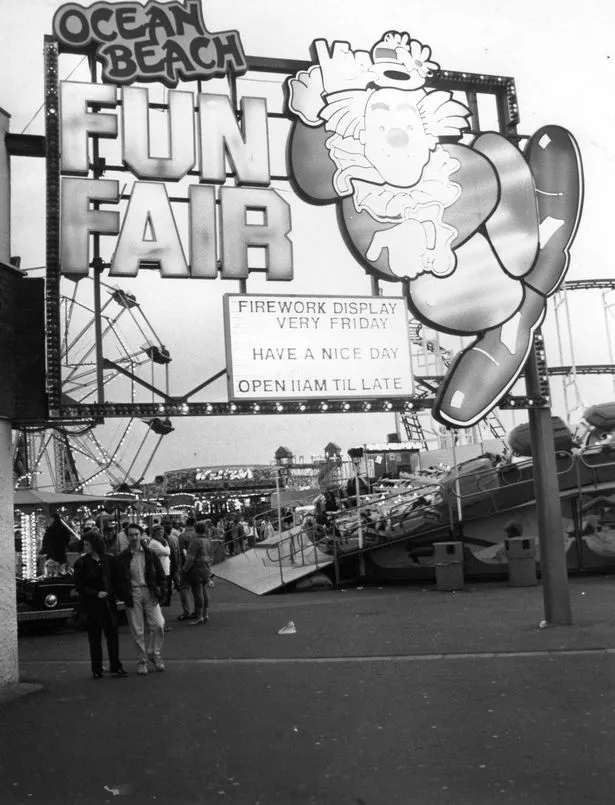 Entrance to Rhyl’s Ocean Beach funfair(Image: Daily Post Wales)
Entrance to Rhyl’s Ocean Beach funfair(Image: Daily Post Wales)
After the war, the company leased land across the street and began developing it into the Ocean Beach Funfair, which began operating in 1954. By the late 1960s, the original fun fair on the Marine Lake side had been demolished but the much loved Ocean Beach remained until it sadly closed in 2007 and left in a state of decay. It was later demolished to make way for the Marina Quay Retail Park.
Join the Manchester Evening News WhatsApp group HERE
